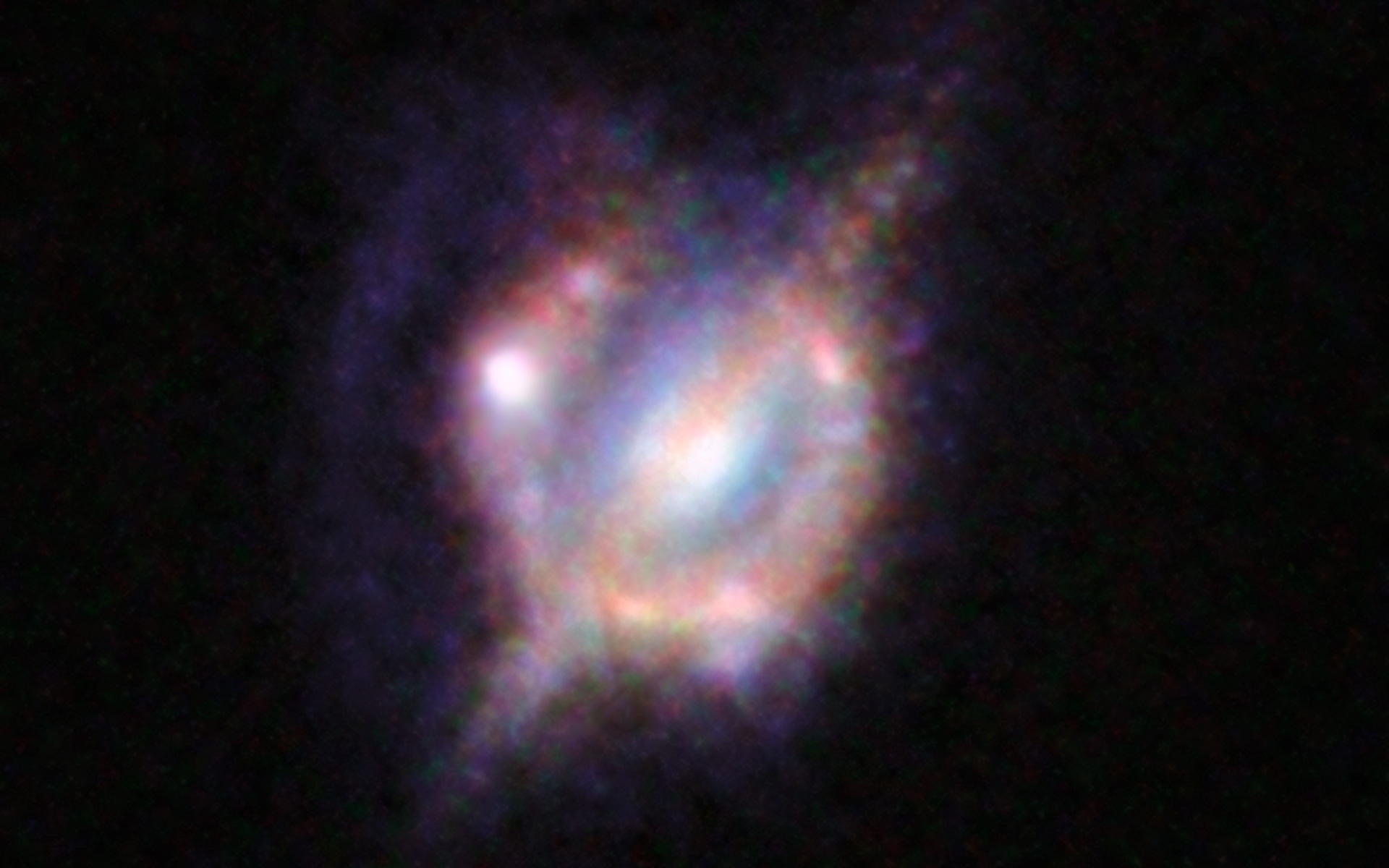Cosmic Lens Reveals Galaxy Crash Like Never Before (Images, Video)
Scientists using a gigantic radio telescope have captured the best view yet of two faraway galaxies colliding in deep space.
The Chile-based Atacama Large Millimeter/submillimeter Array (ALMA) and other telescopes employed a sort of cosmic magnifying glass to study a galaxy called H1429-0028, which lies about 6.9 billion light-years from Earth.
This phenomenon, known as gravitational lensing, occurs when a huge object in space such as a galaxy bends light coming from other bodies behind it. Lensing allows astronomers to peer at galaxies or other objects that would otherwise be too dim and distant to view. [Watch an animation of the galaxy merger]
"These chance alignments are quite rare and tend to be hard to identify," study lead author Hugo Messias, a researcher at both Conception University in Chile and the University of Lisbon in Portugal, said in a statement. "Recent studies have shown that by observing at far-infrared and millimeter wavelengths, we can find these cases much more efficiently."
In far-infrared light, H1429-0028 is one of the brightest gravitationally lensed objects available. It was first found in the Herschel Astrophysical Terahertz Large Area Survey, and is hard to see in visible light.
A suite of telescopes examined the galaxy, including ALMA, NASA's Hubble Space Telescope, the Keck Observatory in Hawaii and the Karl Jansky Very Large Array (VLA) in New Mexico. Hubble and Keck saw a ring of light around the foreground galaxy and also spotted large dust clouds within it, which made it tough to study the more distant H1429-0028.
VLA and ALMA, however, are designed to peer through dust clouds. Their vision at longer wavelengths provided a clearer view of the background H1429-0028, revealing it to be two merging galaxies rather than a single object.
Breaking space news, the latest updates on rocket launches, skywatching events and more!
The colliding galaxies seen in H1429-0028 are similar to those in the much closer Antennae Galaxies, astronomers said. But stars are being formed much faster in H1429-0028 — the equivalent of 400 suns per year compared with 20 or 30 suns per year in the Antennae system.
"With the combined power of Hubble and these other telescopes, we have been able to locate this very fortunate alignment, take advantage of the foreground galaxy's lensing effects and characterize the properties of this distant merger and the extreme starburst within it," said study co-author Rob Ivison, director for science at the European Southern Observatory. "It is very much a testament to the power of telescope teamwork."
The study was published Aug. 26 in the journal Astronomy & Astrophysics.
Follow Elizabeth Howell @howellspace, or Space.com @Spacedotcom. We're also on Facebook and Google+. Originally published on Space.com.

Elizabeth Howell (she/her), Ph.D., was a staff writer in the spaceflight channel between 2022 and 2024 specializing in Canadian space news. She was contributing writer for Space.com for 10 years from 2012 to 2024. Elizabeth's reporting includes multiple exclusives with the White House, leading world coverage about a lost-and-found space tomato on the International Space Station, witnessing five human spaceflight launches on two continents, flying parabolic, working inside a spacesuit, and participating in a simulated Mars mission. Her latest book, "Why Am I Taller?" (ECW Press, 2022) is co-written with astronaut Dave Williams.


